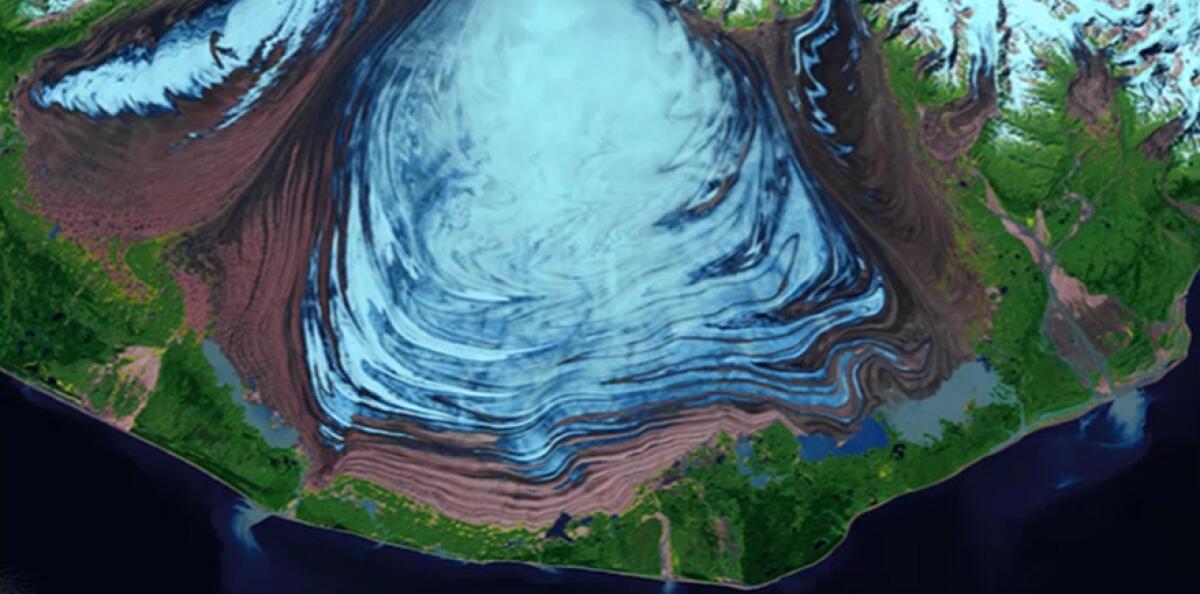Looking beyond Landsat 7

Satellite still delivering after 20 years; RI&S has eyes on what’s next
The land-observing satellite was supposed to work for five years. Now, more than 20 years later, Landsat 7 is still going strong.
In April 2021, the satellite marked its 22nd year of serving as a set of eyes on our home planet, documenting Earth’s splendors such as the expansion of cities and calamities like volcanic eruptions and historic wildfires. As the satellite notches another year, engineers from Raytheon Intelligence & Space are developing new technologies like a full-spectrum calibration system that could contribute to future generations of Landsat systems.
“Our Earth-observing capabilities provide actionable and timely observations – as demonstrated by our successes on Landsat 1-7 satellites,” said Paul Meyer, vice president for Space & C2 Systems for Raytheon Intelligence & Space, a Raytheon Technologies business. “The operating life of systems like Landsat 7 is one of our crowning achievements, with designs lasting 2.5 times longer than their design life on average.”
Like its name implies, Landsat 7 is the seventh imager in a nearly 50-year space-based imaging program by NASA and the U.S. Geological Survey. Since the launch of the first Landsat in 1972, the mission of the program has been to establish and maintain an up-to-date global archive of images chronicling the planet’s changes – a mission that continues today.
The most recently retired imager in the program, Landsat 5, holds the Guinness World Record for the longest-operating Earth observation satellite at 29 years.
After Landsat 5 retired, Landsat 7 continued the mission, delivering a steady current of information and mapping the Earth every 16 days. The system churns out high-definition images characterizing weather, agricultural activity, deforestation, glacial recession, water resources management and related applications.
“We’ve collected millions of scenes over the past five decades with the Landsat satellites,” said Shawn Cochran, business lead for civil and environmental development at RI&S. “But it’s critical to continue to invest in next-generation space-based observation capabilities. We’re innovating new ways to perform observations that reduce the size, weight, power and cost requirements, while delivering more capabilities and improved performance.”
Next-generation space capabilities
As NASA and USGS prepare to launch Landsat 9 in fall 2021 and the next-generation imaging satellite, Landsat NeXt, in the late 2020s, RI&S researchers are pioneering new, advanced technologies that could lead to a more sophisticated Landsat system that would continue its legacy of delivering data continuity.
Building smaller can sometimes compromise capability – but it doesn’t have to. RI&S engineers are developing a prototype imager called the Advanced Technology Land Imaging Spectroradiometer, or ATLIS, that can reduce size, weight, power and cost requirements while delivering even better data.
“Using advanced technology, we’re able to shrink the large telescope on imagers, making the overall instrument smaller and more affordable,” said Jeff Puschell, principal engineering fellow for Space & C2 Systems at RI&S. “A smaller instrument with lower mass means a smaller spacecraft. Smaller spacecraft may be able to use smaller launch vehicles or share the same launch vehicle with other spacecraft, leading to lower-cost launches. That means they could be used for a future Landsat constellation or various space missions.”
Another RI&S technology called Improved Radiometric Calibration of Land Imaging Systems or IRIS, takes the downsizing another step further. IRIS is a compact full-spectrum calibration system that can reduce the size, weight and power of conventional calibrated imagers by 30% while improving image quality.
“The calibration system takes up a large amount of space,” said Puschell. “In order to make imagers smaller, the calibration systems also need to be smaller. And that’s what we’re doing with IRIS – the calibration system will eliminate roughly 90% of that volume, resulting in a much smaller imager size.”
Both ATLIS and IRIS technologies can significantly simplify and reduce the size and mass of the future Landsat NeXt while also improving the quality and cadence of land imaging data and observations.
“Investment in next-generation technologies may ultimately improve the performance and fidelity of the Landsat mission, promising the data continuity we need for decades to come,” said Cochran.
Learn more about RI&S’ space solutions and capabilities.
Business to Business
Connect with the Southern California business community—sign up for our weekly newsletters to stay informed.
You may occasionally receive promotional content from the Los Angeles Times.